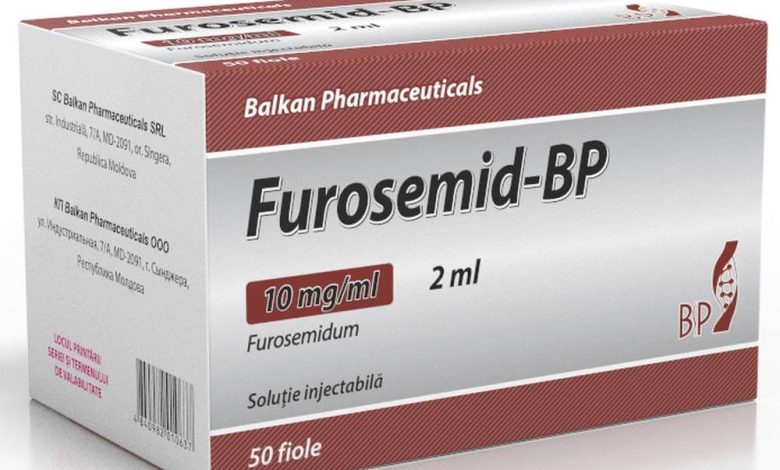Furosemid: instructions for using the medicine, structure, Contraindications

Active material: Furosemid
When ATH: C03CA01
CCF: Diuretic
When CSF: 01.08.01.01
Manufacturer: SOPHARMA AD (Bulgaria)
Furosemid: dosage form, composition and packaging
| Pills | 1 tab. |
| furosemid | 40 mg |
50 PC. – packings Valium planimetric.
Furosemid: Pharmacological action
Bыstrodeйstvuющiй diuretic (salwretïk) – diuretic, increases the excretion of sodium and chlorine. Diuretic (diuretic) effects associated with inhibition of reabsorption (reabsorption) Na ions and C1 in proximal (located in the central portion of the kidney), and distal (located at the periphery of the kidney) portions of the convoluted tubules and the ascending portion of the loop of Henle. Reabsorption potassium inhibited to a lesser extent. The drug is equally effective in acidosis conditions (zakisleniya) and alkalosis (zashelachivaniya) blood. Furosemide does not reduce glomerular filtration, in connection with which it can be used in renal failure. Due to the expansion of peripheral blood vessels and has a diuretic effect hypotensive drug (lowers blood pressure) action.
When intravenous diuretic effect observed after 15-20 minutes and lasts for 3 no, ingestion – through 30-50 m, saved to 4 no.
Furosemid: Indications for use
Stagnation in the small and large circulation, associated with heart failure; liver cirrhosis with portal hypertension (increased pressure in the portal vein of the liver), chronic and acute renal failure, pulmonary edema and brain, barbiturate poisoning, eclampsia (late toxicosis pregnant).
Furosemide is indicated for patients with severe hypertension (Persistent high blood pressure), where other diuretics are ineffective, as well as for relief (remove ) severe hypertensive crises (rapid and sharp rise in blood pressure).
Furosemid: Mode of application
Assign inside, intramuscularly or intravenously. Inside are usually 40 mg 1 once a day (morning). If necessary, the daily dose can be increased to 80-160 mg; in this case the drug taking 1-2 times a. day with an interval 6 no. In severe kidney failure the dose can be increased to 240-320 mg / day. After reducing the swelling gradually reduce the dose to the minimum effective, and the intervals between doses increased to 1-2 days. In hypertensive appoint furosemide 20-40 mg 1 once a day, in conjunction with heart failure dose can be increased to 80 mg.
If it is impossible or inappropriate administration of furosemide administered drug is administered intramuscularly or intravenously (slow jet) by 20-60 mg 1-2 once a day, if necessary, the dose may be increased to 120 mg. The drug is administered during the 7-10 days or more. Then, go to the reception of the drug inside.
Furosemid: Side effects
Nausea, diarrhea, hyperemia (redness) skin, itch, hypotension (lowering blood pressure), reversible hearing loss, interstitial nephritis (inflammation of the kidneys, mainly affecting the connective tissue). Due to increased diuresis (urination) observed dizziness, depression (state of depression), muscular weakness, thirst. Perhaps the development of hypokalemia (lowering the potassium level in the blood), hyperuricemia (increased uric acid in the blood), urikozurii (increasing the excretion of uric acid), giperglikemii (an increase in blood glucose).
When adverse reactions should reduce the dose or discontinue use of the drug.
Furosemid: Contraindications
The first half of pregnancy, kaliopenia, pechenochnaya coma, end stage (the final stage of the disease, preceding death) renal failure, mechanical obstruction of the urinary tract.
Furosemid: Storage conditions
List B. Dry, protected from light.
